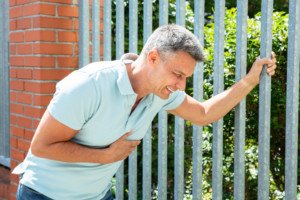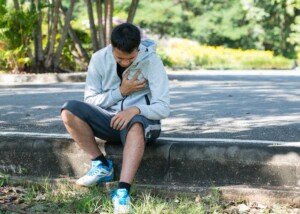
If physical exertion brings on angina, will the angina necessarily persist as long as the activity does, or is it possible for it to disappear if the exercise continues?
Let’s assume that the physical activity is something that can be sustained, such as walking up a hill, walking the dog, pushing a lawnmower, etc.
Angina occurs when the supply (oxygenated blood) does not meet the demand (physical activity).
The most common symptoms are chest pain, pressure or tightness, and/or shortness of breath that’s out of proportion to the degree of physical effort.
Less commonly the person may have pain in the jaw, arm or back, or nausea.
“Symptoms can disappear as you continue the exertion,” says Dr. Cynthia Thaik, MD, cardiologist and author of “Your Vibrant Heart,” which can be purchased at amazon.com.
“This would depend on an intact and appropriately functioning endothelium,” she continues. The endothelium is the interior surface of the coronary arteries.
Dr. Thaik explains, “Ischemia (lack of blood flow) leads to angina. This will cause multiple local reactions within the downstream blood vessel including the change in pH (more acidity), release of cytokines and other inflammatory markers and the release of various biomarkers, hormones and the initiation of various enzymatic processes.
“Assuming the endothelium is functioning appropriately, the response will be that of vasodilatation [expansion of the blood vessel] which would relieve the angina.
“If, however, the endothelium is dysfunctional, there will be vasoconstriction rather than vasodilatation, leading to more angina until the activity is stopped.
“This is the acute pathophysiology, but over time if sustained intermittent ischemia, then there would hopefully be the generation of collateral circulation, leading to improved anginal symptoms over time.”
Collateral circulation refers to the generation of new blood vessels that would assist the main coronary arteries in blood flow to the heart.
When symptoms of angina start appearing while a person is at rest rather than only during exercise, this means the condition of their coronary arteries has gotten a lot worse.
A visit with a cardiologist should be arranged promptly.

Dr. Thaik’s clinical interests include congestive heart failure and women’s heart disease, and is affiliated with the American Heart Association.
 Lorra Garrick has been covering medical, fitness and cybersecurity topics for many years, having written thousands of articles for print magazines and websites, including as a ghostwriter. She’s also a former ACE-certified personal trainer.
Lorra Garrick has been covering medical, fitness and cybersecurity topics for many years, having written thousands of articles for print magazines and websites, including as a ghostwriter. She’s also a former ACE-certified personal trainer.
.









































